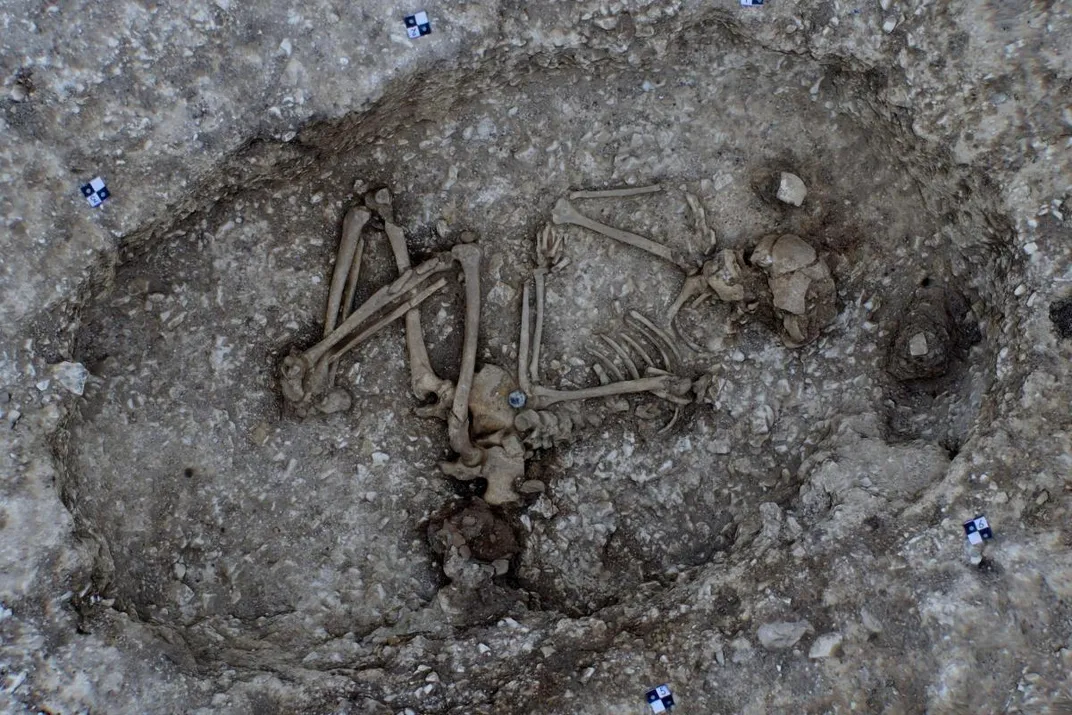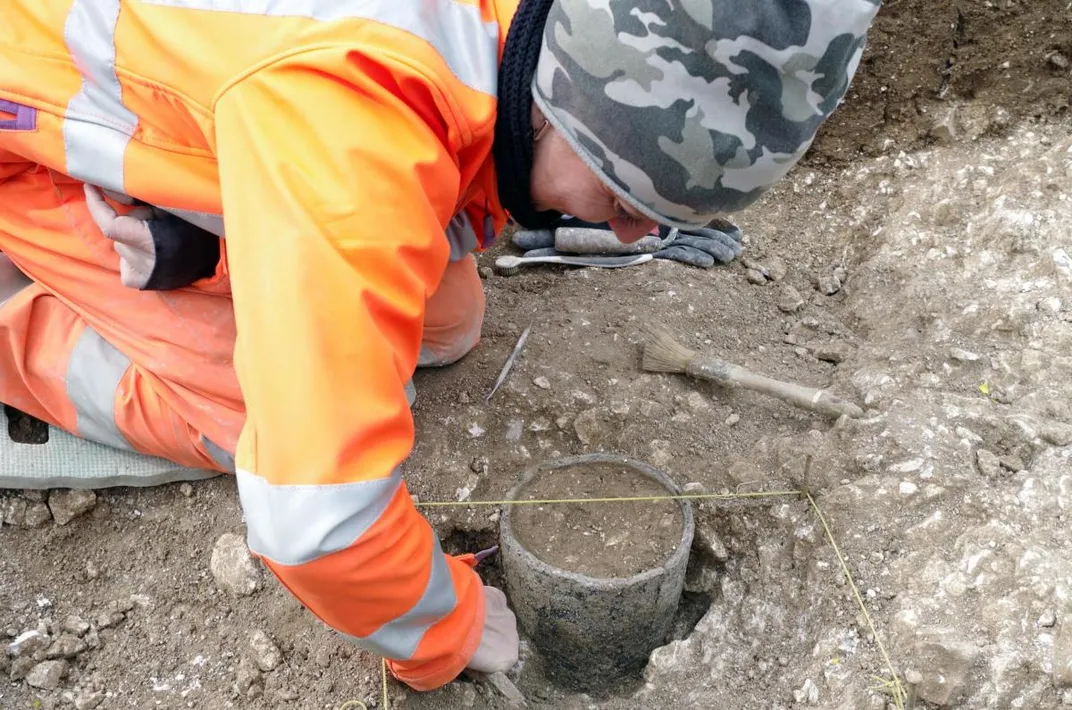Newly Unearthed Bronze Age Graves Underscore Stonehenge Tunnel’s Potential Threat to Heritage
A critic of the controversial project points out that construction could lead to the loss of half a million artifacts
:focal(1733x1219:1734x1220)/https://tf-cmsv2-smithsonianmag-media.s3.amazonaws.com/filer/42/b6/42b69009-0c16-4acc-86dd-cc0cd9515524/gettyimages-670794238.jpg)
Archaeologists have uncovered a slate of prehistoric finds near the iconic Stonehenge site, including Bronze Age graves, unique Neolithic pottery and the remains of a baby buried alongside a beaker, reports Steven Morris for the Guardian.
Wessex Archaeology made the discoveries ahead of a major tunnel project set to move the nearby A303 highway underground. While conducting preliminary surveys of the area, the team hand-excavated and sieved 1,777 topsoil test pits, excavated 440 trial trenches, and scanned 23 hectares of ground with ground-penetrating radar, according to a statement.
The A303 plan has provoked enormous controversy in recent years, with many archaeologists arguing that the tunnel will cause irreparable harm to one of the world’s richest historical sites. Last year, a group called Save Stonehenge World Heritage Site launched a legal challenge to the government plan; in December, more than 100 people staged a mass protest against the project on Stonehenge’s grounds, reports Garry Shaw for the Art Newspaper.
Proponents of the tunnel plan argue that A303 currently supports twice as much traffic as it was designed to accommodate, leading to notorious traffic jams and pollution near the historic site. The new tunnel would move the highway underground for a two-mile stretch.
With the revamped design, “[v]isitors will be able to experience Stonehenge as it ought to be experienced, without seeing an ugly snarl of truck traffic running right next to it,” Anna Eavis, curatorial director for English Heritage, the charity that cares for the historic site, told National Geographic’s Roff Smith this past November.
/https://tf-cmsv2-smithsonianmag-media.s3.amazonaws.com/filer/8a/4a/8a4acf1a-e7fb-40f6-bf2b-3b9ef74237c1/gettyimages-1229966795.jpg)
Archaeologists and other groups argue that the tunnel will have unforeseen and lasting impacts on the artifact-laden land. As Mike Parker Pearson, a scholar of British later prehistory at University College London and a member of Highway England’s independent A303 scientific committee, told the Observer’s Tom Wall in November, contractors will only be required to retrieve and preserve 4 percent of artifacts uncovered during tunnel construction.
“We are looking at losing about half a million artifacts—they will be machined off without recording,” Pearson added. “You could say ‘they are just a bunch of old flints,’ but they tell us about the use of the Stonehenge landscape over the millennia.”
Major discoveries continue to be made in Stonehenge’s vicinity some 5,000 years after its creation. In summer 2020, for instance, researchers found a circle of enormous ancient pits that “completely transformed how we understand [the] landscape,” as lead researcher Vincent Gaffney of the University of Bradford told the New York Times’ Megan Specia at the time.
The most recent slate of discoveries includes two burials of Beaker people, who arrived in Britain about 4,400 years ago. One female adult who died in her 20s or 30s was buried in a crouched position with a small shale cylindrical object that has perplexed researchers. Matt Leivers, A303 Stonehenge consultant archaeologist for Wessex Archaeology, tells the Guardian that the object is an “oddity.”
“Although not hugely significant, we can only speculate about what it was—it may have been a ceremonial cup purposefully damaged before it was laid in the grave, or it may be the cap off the end of a staff or club,” says Leivers in the statement.
Another grave contained the tiny ear bones of an infant. Elsewhere in the site, researchers found a C-shaped Late Bronze Age enclosure that may have served as a center for industrial work, based on the density of burned flint that surrounds the area, per the statement.
Finds from the latest series of excavations will be moved to a storage facility in Salisbury before going on display in the city museum, the Guardian reports.
“We’ve found a lot—evidence about the people who lived in this landscape over millennia, traces of people’s everyday lives and deaths, intimate things,” Leivers tells the Guardian.
The next phase of archaeological work is set to begin later this year. Construction on the tunnel is expected to begin in 2023.
/https://tf-cmsv2-smithsonianmag-media.s3.amazonaws.com/accounts/headshot/nora.png)


/https://tf-cmsv2-smithsonianmag-media.s3.amazonaws.com/accounts/headshot/nora.png)